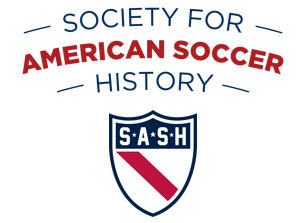Playoffs are one of the most hotly debated subjects in American soccer today, along with the other side of that coin, pro/rel. American soccer has had varied experience with playoffs over the years, some good, some bad.
Personally, I happen to think playoffs are the best way to go for the top levels of American soccer. That’s just one person’s opinion, however, and besides, this blog is supposed to be about history, not current events.
Playoffs didn’t become the standard in American soccer until just before the dawn of the NASL. The two leagues that merged in 1968 to form the NASL, the United Soccer Association and the National Professional Soccer League, each held playoffs in their lone season, 1967, and the American Soccer League also went to a playoff system that year. The playoffs held in subsequent years by various leagues (the NASL, the ASL, MLS, the APSL/A-League/USL-1/USSF-2 and several women’s leagues) have usually functioned reasonably well, even if the general concept of playoffs has had critics. The same cannot be said of the occasional earlier ASL playoffs, which were subject to glitches and one remarkably awkward format.
After playing a single table in its first six seasons, the ASL introduced playoffs, and a split season, in the 1927-28 season. The four teams that made the playoffs were (at least in theory) the first two from the first half of the season, which ran from September to December, and the first two from the second half, which ran from February to May. Although it was organized in logical fashion, it didn’t go off without a hitch. First, there was a tie for second place in the first half of the season, necessitating a tie-breaking playoff game. Second, the New Bedford Whalers, who won that game and thus qualified for the postseason playoffs, subsequently finished first in the second half of the season, and also qualified for the playoffs that way. So, with only three teams qualified for the playoffs, the league held another playoff, between the two third-place finishers, to get a fourth playoff team. Once all that was settled, the playoffs themselves were almost an anticlimax. One team was disqualified for using an ineligible player, but that was nothing unusual in an era when protested games were far more common than they are today.
The ASL held another split season in 1928-29, but the playoff was cancelled after the same team won both halves of the season. The next split season after that, in 1931, produced a playoff between the New York Giants and New Bedford Whalers that went off fairly smoothly, and involved an impressive comeback. New Bedford won the first leg by 8-3, but New York rallied in the second leg for a 6-0 victory and a 9-8 aggregate triumph. The high scores seem less surprising in light of the fact that the 10 forwards on the two teams included eight future Hall of Famers.
The second, semipro, ASL went largely without playoffs before 1967. However, there was a playoff in 1949 to break a tie in the final standings, and a three-season stretch (1936-37, 1937-38 and 1938-39) when the league was split into two divisions and used a bizarre playoff system. The first three teams in each division qualified. In the first round of the playoffs, the first-place finishers had a bye, the second-place finishers played each other and the third-place finishers played each other. In the semifinals, the winner of the game between the second-place finishers played the winner of the game between the third-place finishers, and the first-place finishers played each other. So, with the exception of the first-round bye for the division winners, the reward for finishing higher was a tougher playoff opponent.
All this may not have much to do with the current debate over playoffs in soccer, but it does indicate that playoffs do have some history in American soccer, albeit a checkered one.
A version of this article first appeared on Roger’s Big Soccer blog on April 4, 2012
